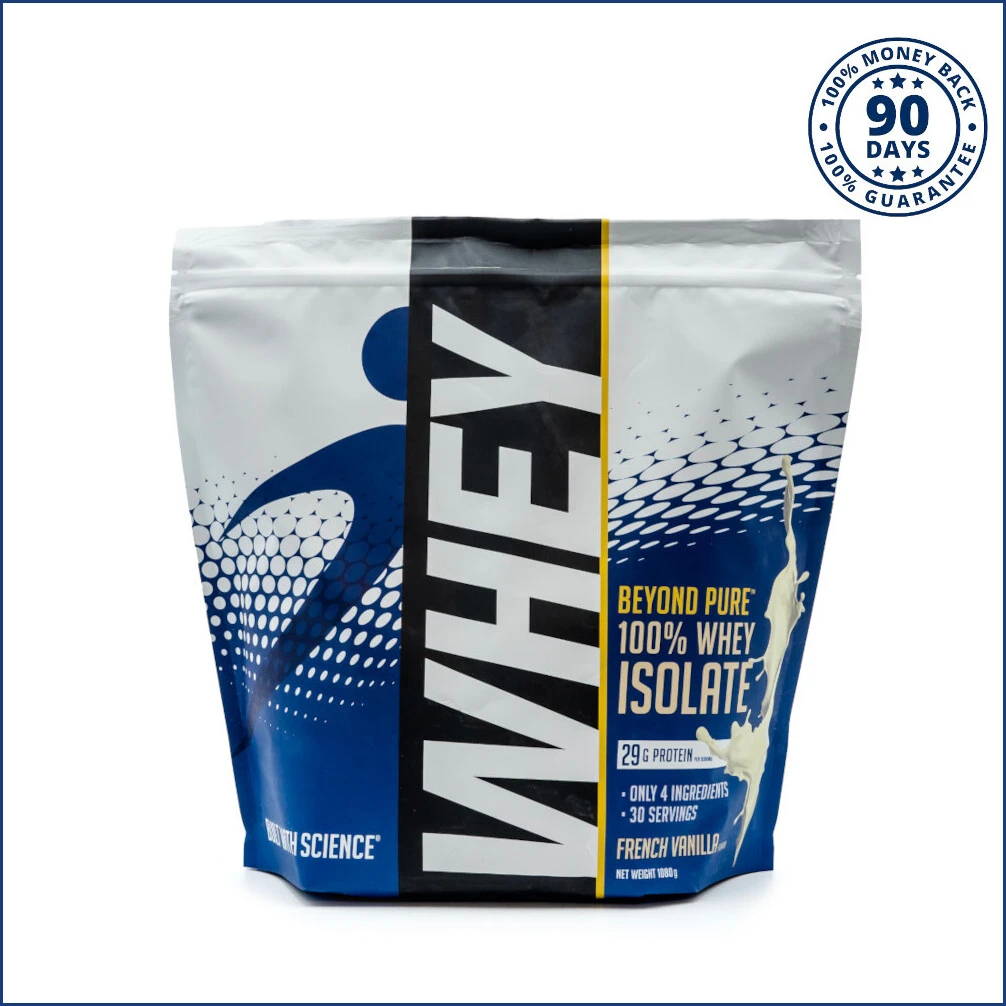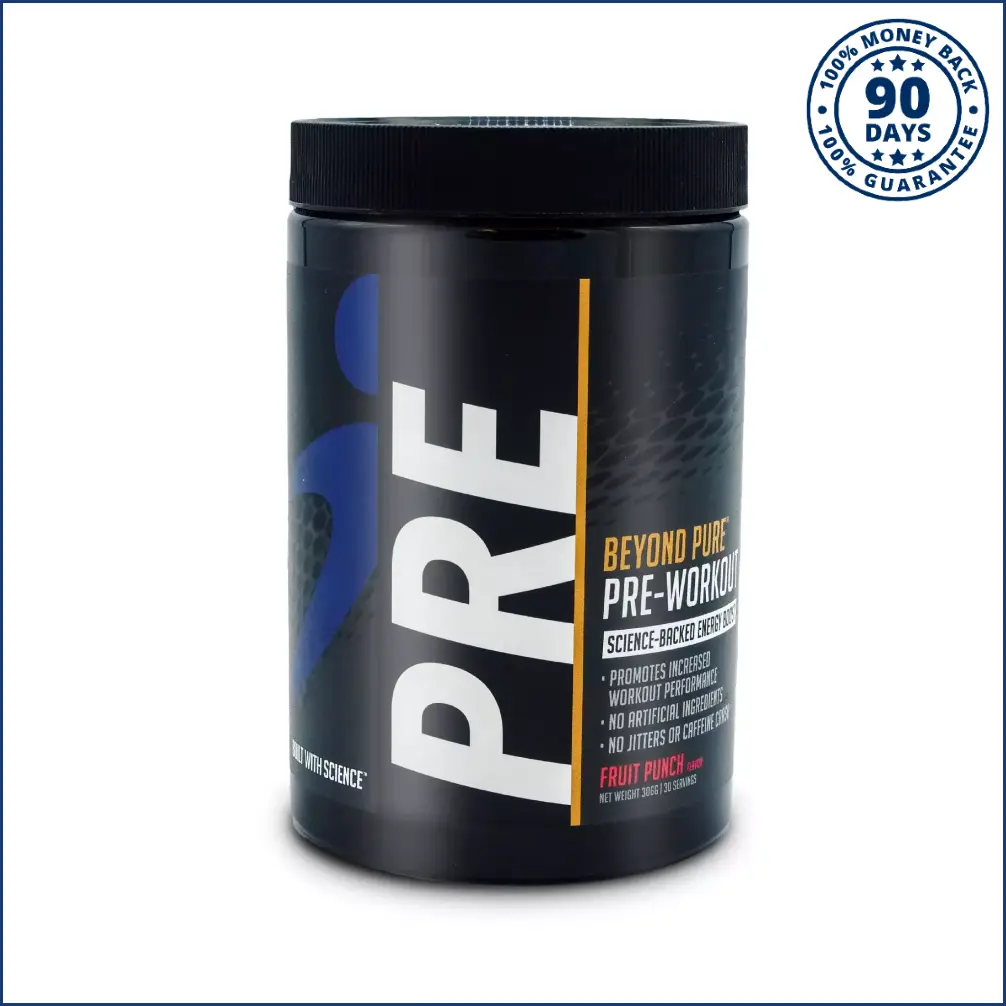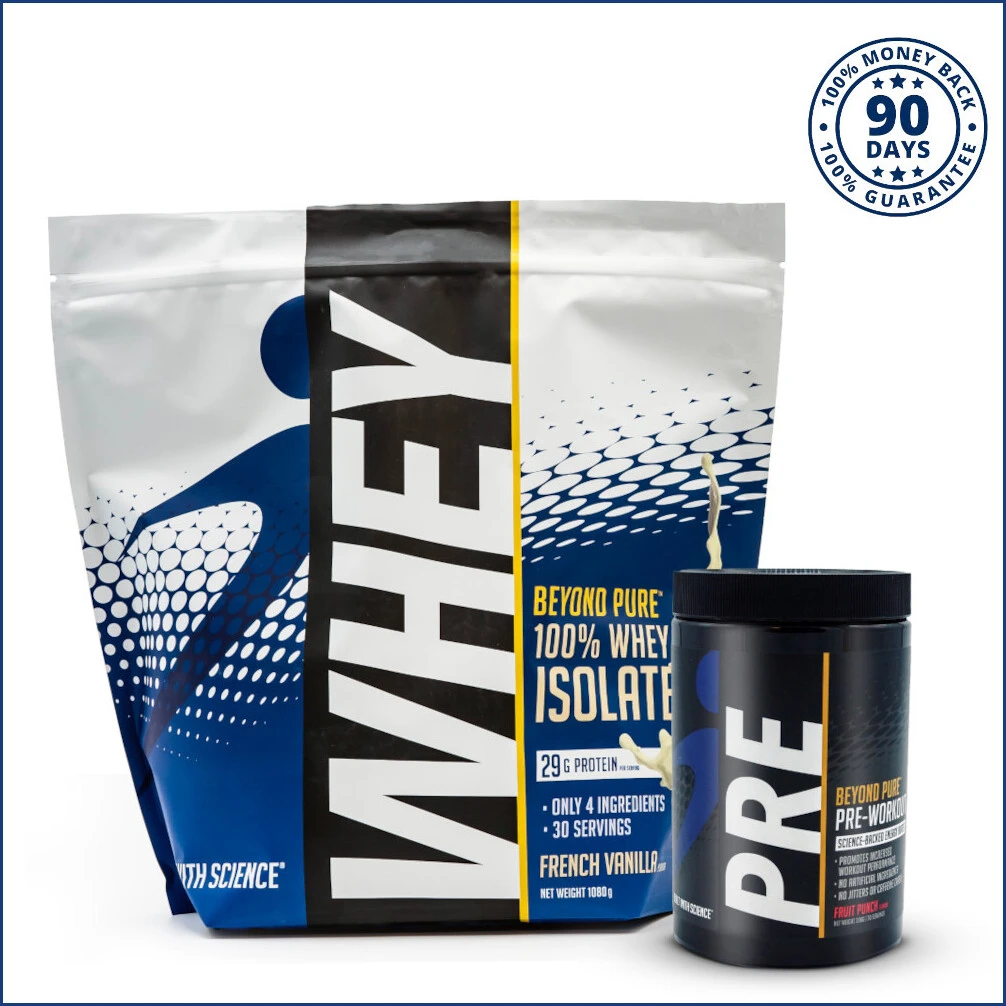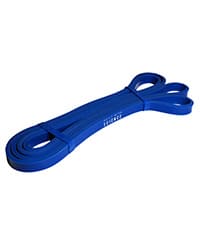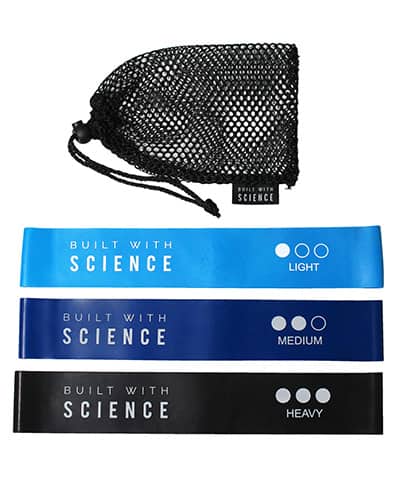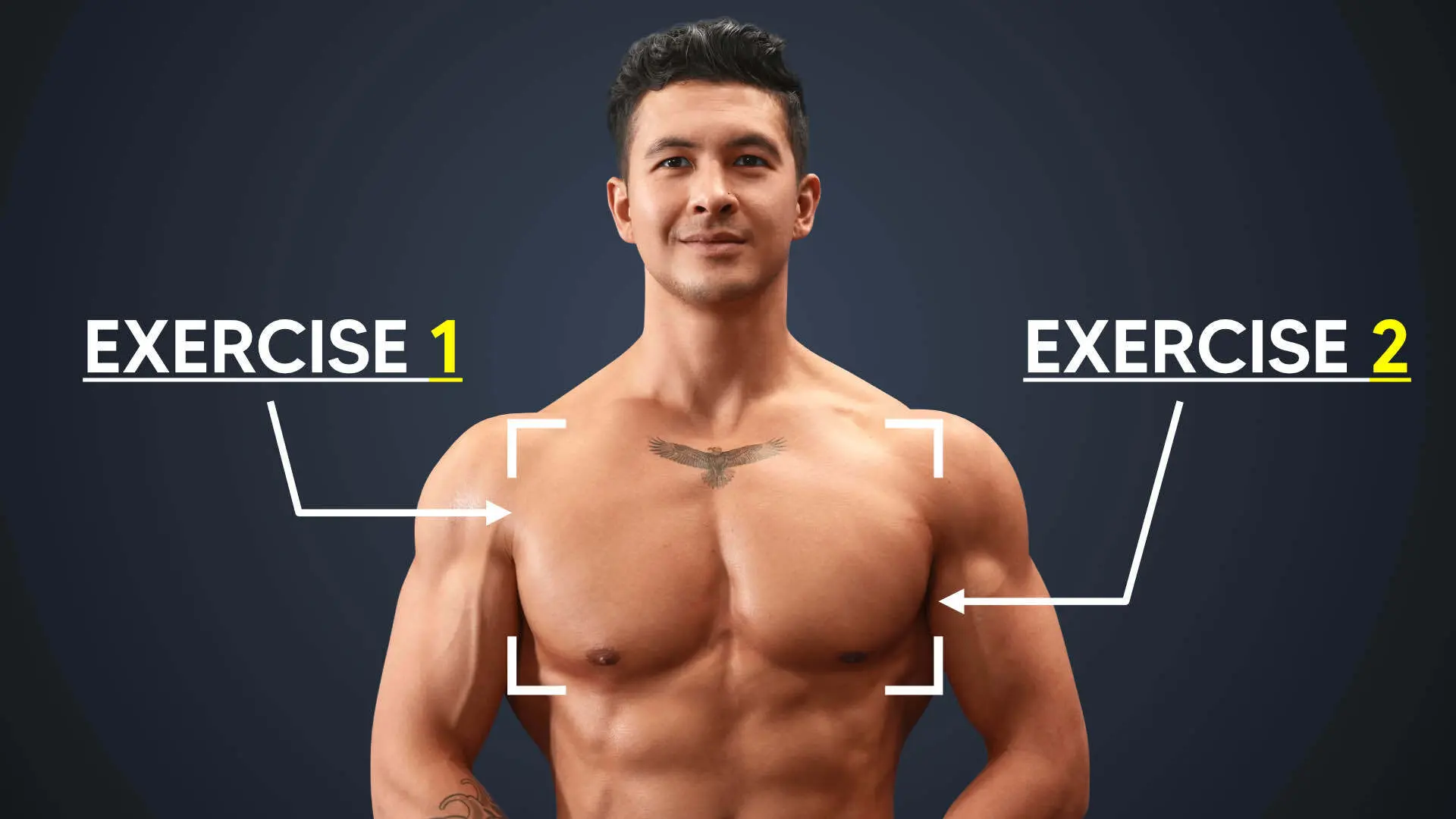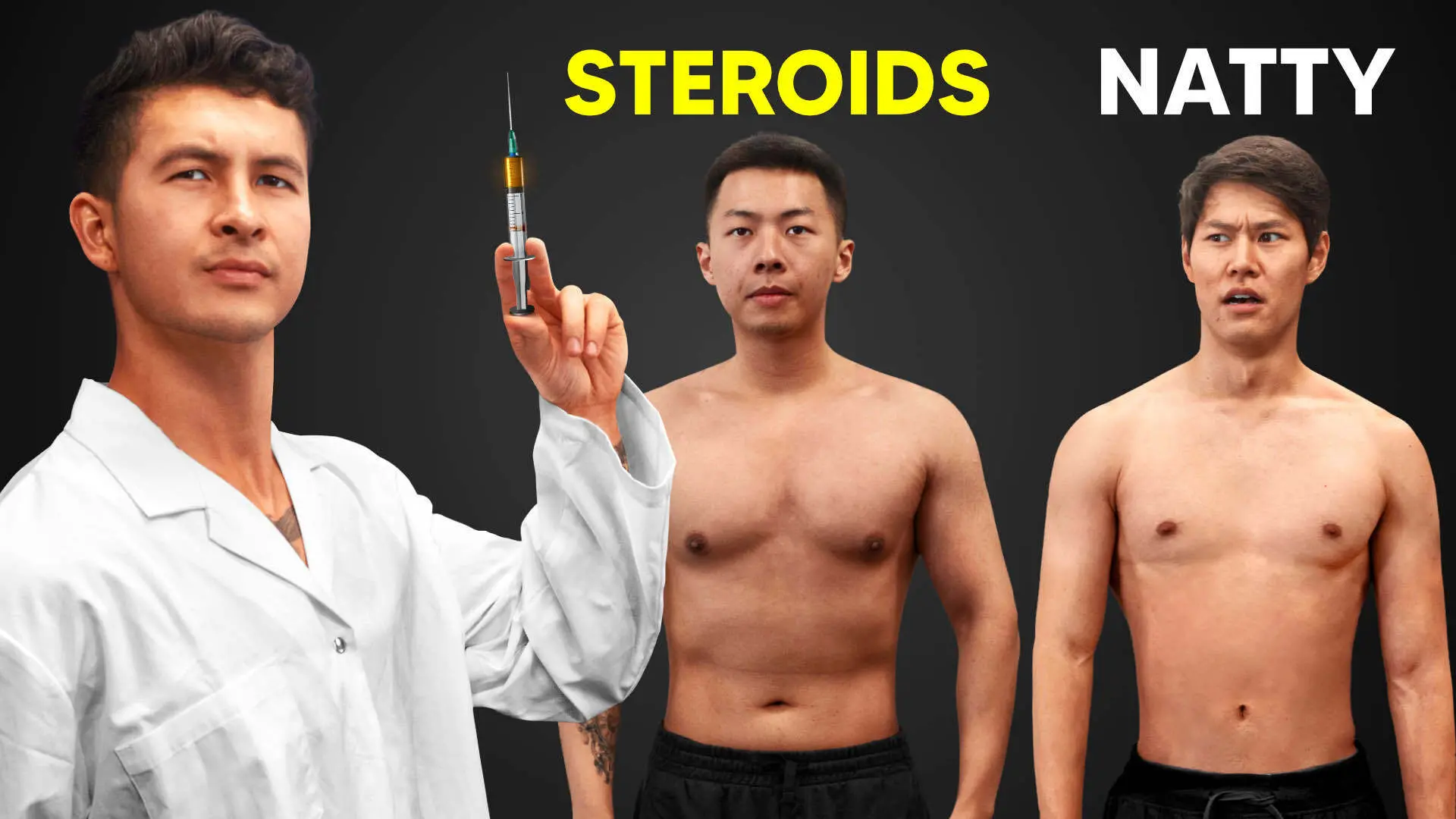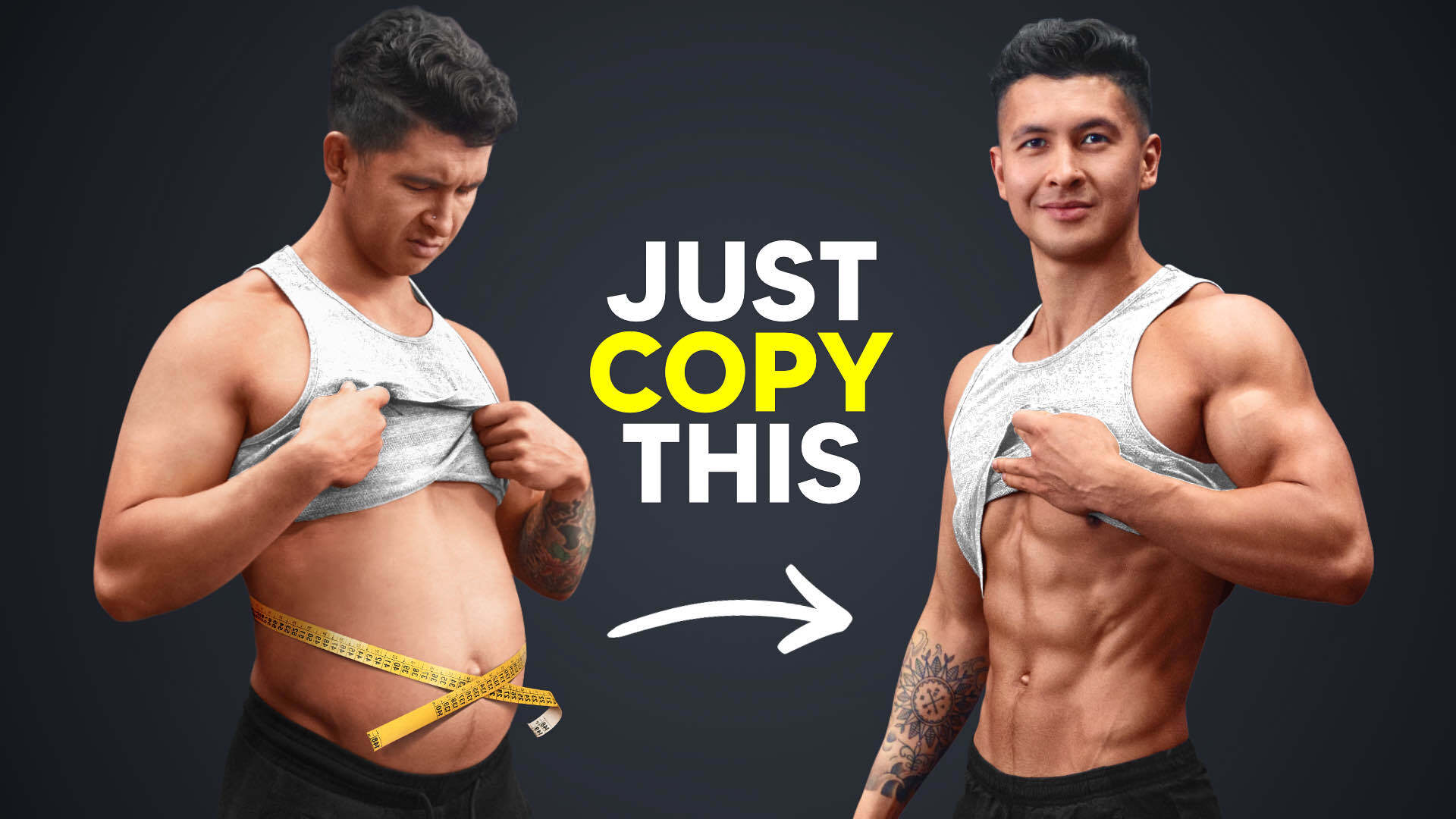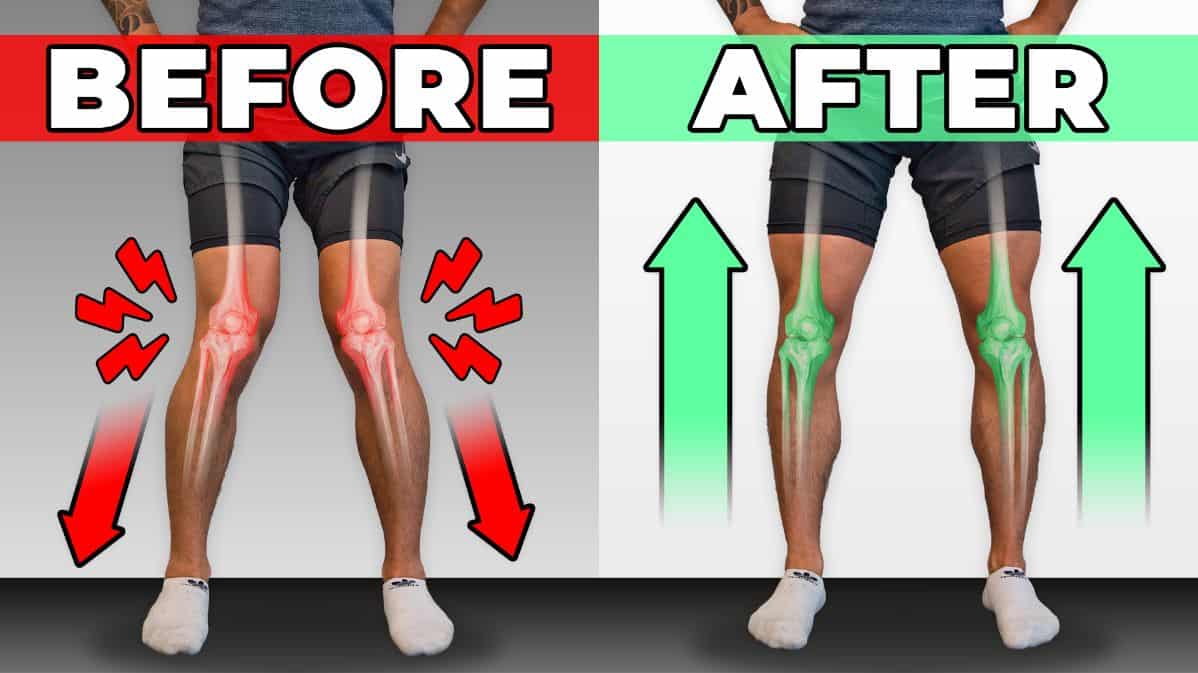
How To Unf*ck Your Knees (10-Minute Corrective Routine)
Bad knees? I'll run you through the exercises you need to do to ward off knee discomfort - so you can keep crushing your workouts, pain-free.
I'm going to show you how to fix your knee issues and protect your knees for good with a few key knee exercises, packed into a 10-minute corrective routine you can add to your workouts. Here's a preview of what we'll go through in this article:
- Tests to figure out the causes of your knee discomfort
- How to determine the appropriate knee mobility and stability exercises for your body (based on test results)
- How to combine it all into a 10-minute corrective routine (PLUS instructions on how and when to implement)
By the end of the article, you should not only feel an immediate relief in your knees but also have much better knee alignment when you move and squat. And best of all? You will also have a 10-minute routine - structured around the best knee exercises for you - to keep your knees protected for the long term.
A short note before we begin: as the saying goes, prevention is always better than cure. That's why I design every BWS program carefully to ensure that it'll train all muscle groups in a well-rounded manner - which can prevent knee pain from occurring in the first place. If you're interested in transforming your physique in the most time-efficient and safe manner:
Click the button below to take my analysis quiz to discover the best program for you:
↓
Where Does Knee Pain Come From?
The most common type of knee pain is at the front of the knee. It's a warning sign that something is wrong. The only problem? We don't know where. Typically, it's in the muscles and joints above and below the knees (i.e. hips and ankles) as a result of our lifestyle:
- We spend a lot of time sitting down: This can lead to 2 things. First, our glutes become weak. And second, our hips become imbalanced on one side compared to the other.
- We stand and/or walk in shoes that often come with a heel lift: This can lead to our angles becoming stiff.
So, the knee, caught in between the hips and ankles, has to compensate to fill in these gaps. This leads to excessive stress on the knees whenever we run, jump, or perform exercises like the squat. Over time, this can develop into pain or discomfort. Let's now do some ankle and hip tests to reveal the cause of your knee pain - crucial for determining which ankle and hip mobility exercises to add to your knee corrective routine.
Tests To Reveal The Cause Of Your Knee Pain
Test 1: Ankle Mobility
The first test is for ankle stiffness. Here's what you want to do:
- Take your shoes off, find a wall, and kneel in front of it.
- Make a thumb and fist with your hand. That's the distance you want between your big toe and the wall.
- From here, push your knee forward to try to touch the wall with your knee. Repeat this on both sides.
To pass (note that ALL 4 are required for a pass):
- Knee must reach within an inch of the wall
- Knees and hips must travel straight rather than rotate inward or outward
- Heel must stay in contact with the ground
- The difference between both side should not exceed one inch
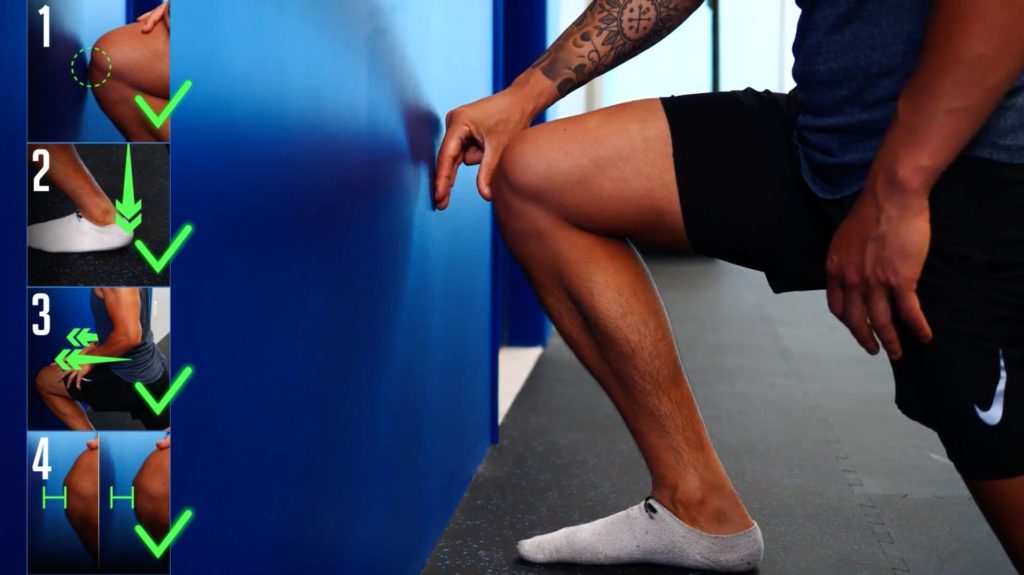
Typically, the side where you experience knee issues will be on the more restricted side. But don't worry. We'll show you the ankle mobility exercise to fix this after we finish testing.
Test 2: Hip Mobility
To be specific, we're going to look at internal rotation. Here's what you're going to do:
- Lie on your back with your knees up and legs bent at 90 degrees.
- While keeping your knees in place, kick out your feet to the sides as far as they can go.
- Take a look and note if both sides are even - or if one side is tighter (i.e. you can't get one foot out as far as the other)
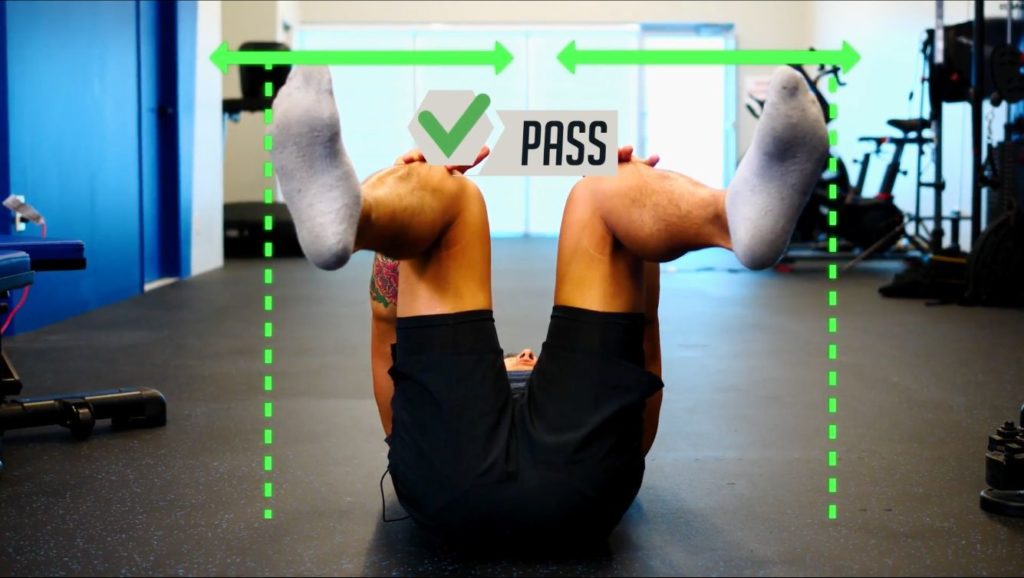
Note down your results once you complete these 2 tests. Before we move on to mobilizing your ankles and hips (as necessary), though, I want to emphasize the importance of doing tests like this because everyone's body is different.
That's exactly what I've applied within my Built With Science programs by developing a system that uses science to transform your specific body into a lean, muscular, pain-free physique. It's worked for tens of thousands of people of all different body types, genetics, and lifestyles. Just input your gender, age, body type, and fitness goals into the following quiz - and we'll guide you to which of my programs is best suited for you right away:
Click the button below to take my analysis quiz to discover the best program for you:
↓
Still thinking it through? This might help. It's a one-time payment for LIFETIME ACCESS, with home workouts included right now as a free bonus. Plus, we also offer a 30-day money-back guarantee. Alright, now let’s get to the specific knee mobility and stability exercises you should be doing in your 10-minute corrective routine.
Mobility Exercises That'll Help Fix Knee Pain
We're going to use your test results to determine what mobility exercises you should focus on. This will help you temporarily improve your restrictions. But the stability exercises we'll add afterward will be essential to help you keep those knee improvements long-term.
If You Struggle With Ankle Mobility
If you failed the ankle test, add the combat stretch to your routine. Here's how you can perform it:
- Take a half-kneeling lunge position, straighten up your hips, and drive your front foot forward over your toe.
- As you do so, think about pulling yourself forward by driving your toes up to your shin. This will activate your shin muscles (tibialis anterior) to make the stretch more effective.
- Go as far as you can without your heel lifting off. Hold this end position for 5 seconds.
- Then repeat for 5 to 10 repetitions.
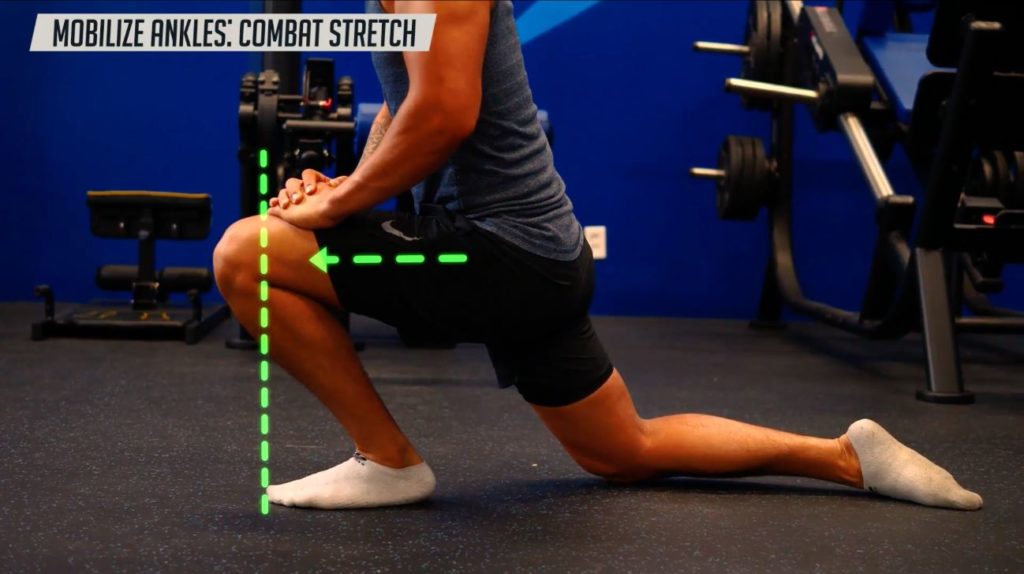
Start with your more restricted side before switching to the other side. If you have a band, put your leg up on a platform - and wrap a band on top of your ankle pulling from the back as you perform the stretch. You'll likely get a little bit more mobility with this setup.
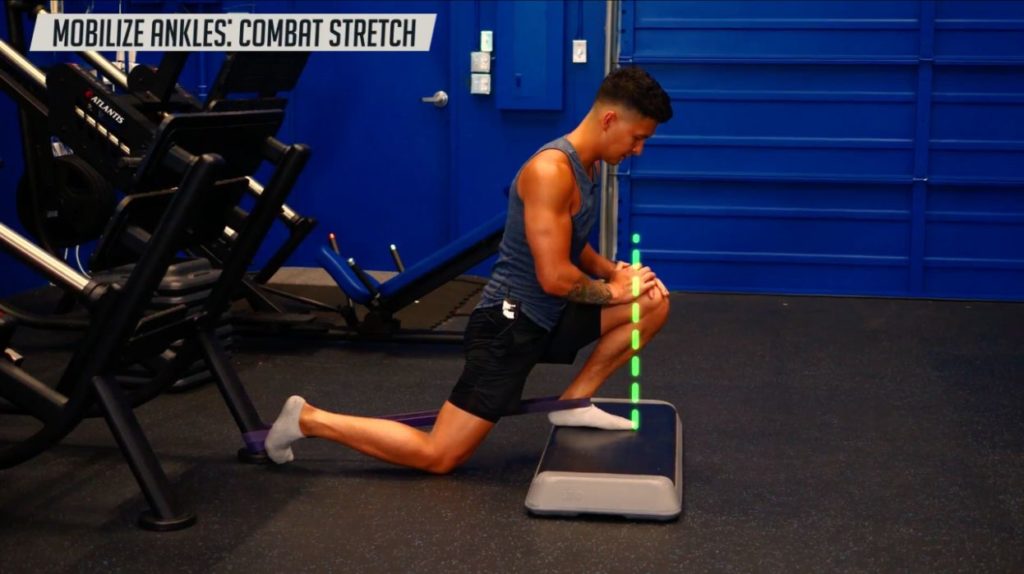
If You Struggle With Hip Mobility (Internal Rotation)
Found an imbalance in the hips internal rotation test? Then you'll want to add the following stretch:
- Sit on your butt with your arms supporting you upright. Your legs should be out in a wide stretch.
- Point your toes up to activate muscles that'll help avoid aggravating your knee during the stretch.
- Then, drive your knee toward the floor until you feel a stretch.
- Hold that for a few seconds, then switch from side to side for about 5 to 10 reps each.
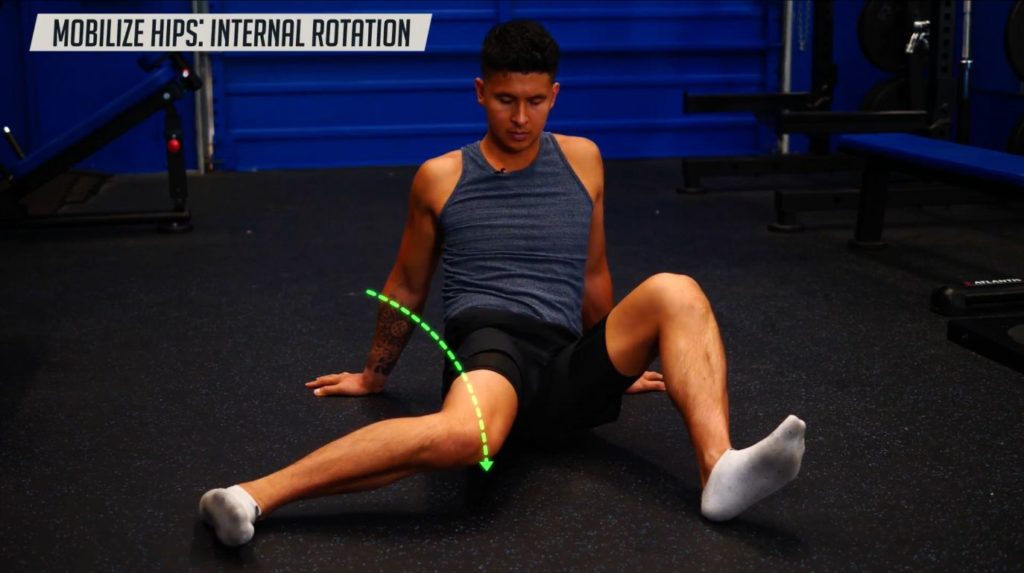
We can do an even more effective stretch if you have a band available, by the way. Here's how:
- Wrap the band around a low fixture and loop it around the hip of your more restricted side so it's pulling you back.
- Get down on your hands and knees, kick the foot of your banded leg out, and sit your butt back into your heels.
- From here, if you can, come down to your forearms.
- Rock back and forth for about 5 to 10 reps and gradually kick your leg out further for a deeper stretch.
- Repeat on the other side.
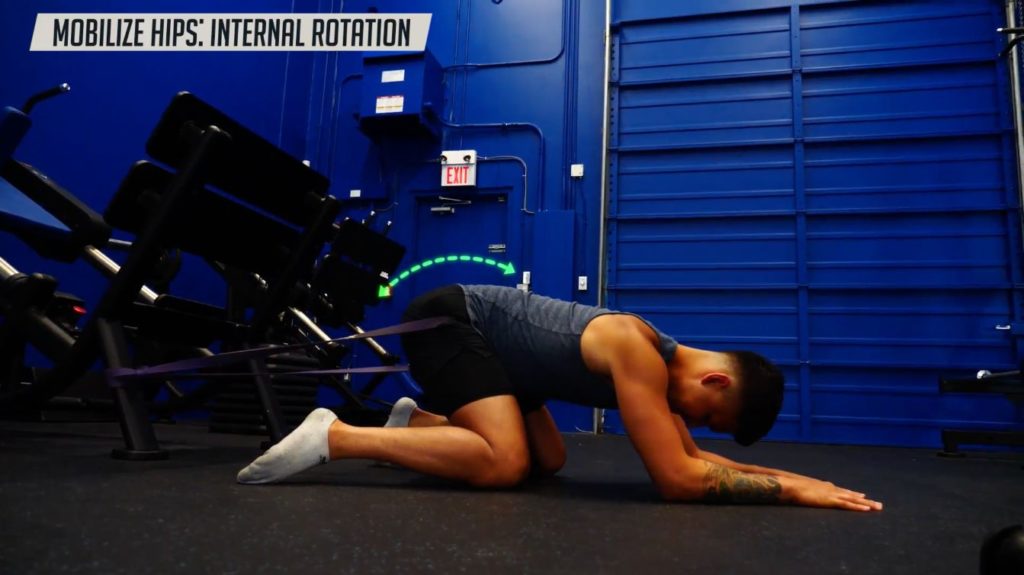
Stability Exercises To Prevent Knee Discomfort For The Long-Term
Now, your body is ready for the stability exercises. After we run through these, we'll show you the full 10-minute routine. And the best way to use it.
Exercise 1: Hip Airplanes
This first move will help further open up your hips. But in addition, it will also strengthen your weak glute muscles. To perform hip airplanes:
- Lightly grab onto a fixture, like a table, for support with both arms.
- Extend one leg back off the ground.
- Rotate your belly button toward the side of the planted leg to stretch your glute. Don't let your knee cave in as you do so.
- Then, squeeze your glutes together hard as if you were trying to stop your friend from poking your butt.
- Keep them squeezed while you now rotate your belly button out to open your hips.
- Hold this top position for 5 seconds. You should feel a stretch in your groin - and your glutes working hard.
- Then, rotate back in to complete one rep. As you do these, think of a pole attached from your head to foot rotating inwards and outwards. Your whole body should rotate as one.
- Aim to complete a slow and controlled 10 reps on each side.
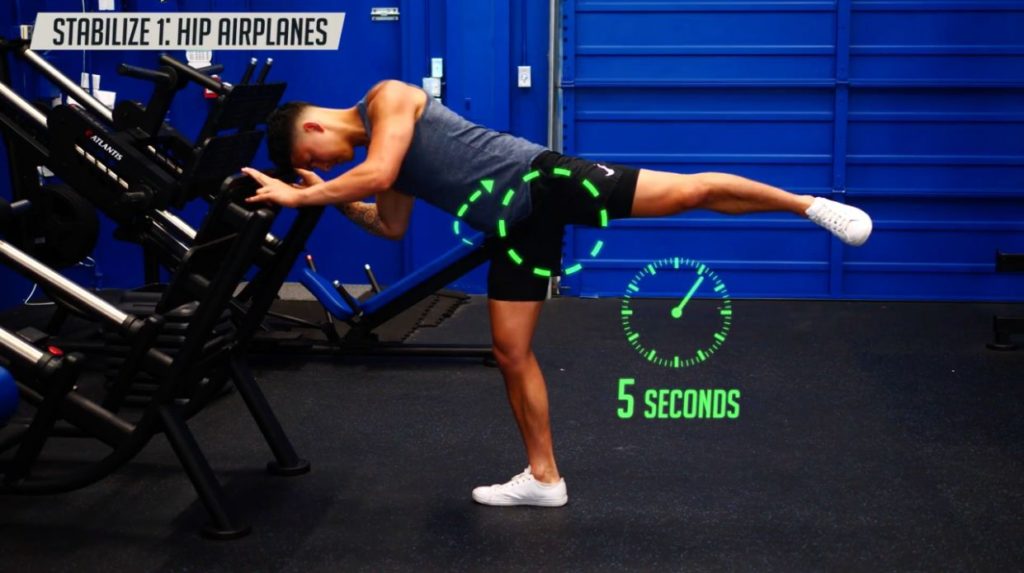
You can start with your leg just slightly off the ground - then gradually kick it back further to progress it.
Exercise 2: Eccentric Goblet Squat
The next move, the eccentric goblet squat, also works your glutes. By by focusing on the downward part of the movement, the exercise will help improve your knee health as well. Here's how to perform the eccentric goblet squat:
- Grab any weighted object, like a book or dumbbell, and hold it at your chest.
- Get your feet into a squat stance and think about spreading the floor apart to activate your glutes.
- From here, you're going to very slowly pull yourself down into the bottom of a squat. Take a total of 5 seconds but stop every 1 second to hold and squeeze your glutes. Keep your knee inline with your toes.
- Go as deep as you comfortably can without pain, and then push back up through your mid-foot.
- Repeat for 5 reps.
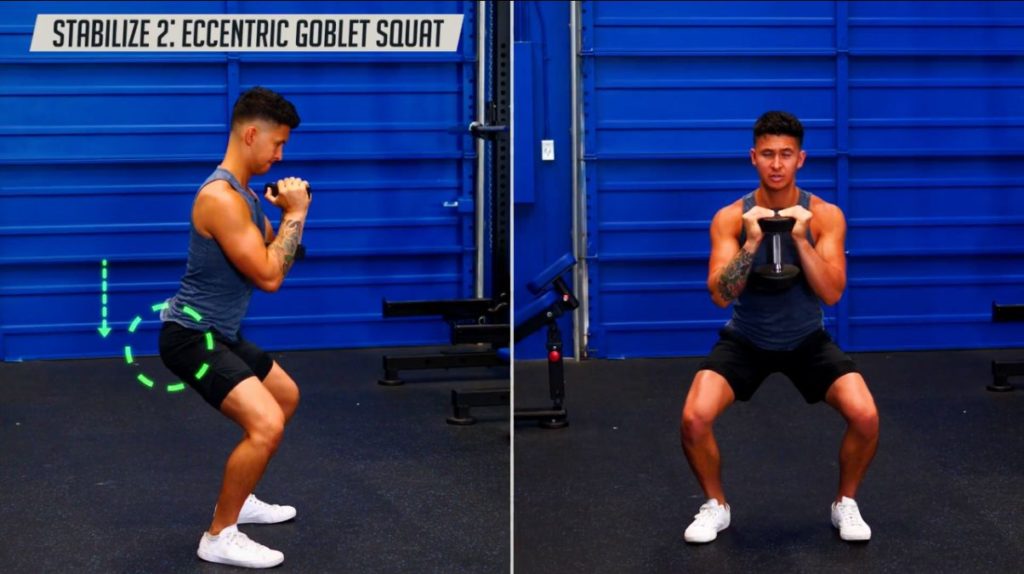
Exercise 3: Wall Squat Hold
The last exercise is called an isometric, where the body doesn’t move but the muscles around the knees are contracting. It will help both provide instant relief to your knee pain or discomfort so that you can train afterwards. Plus, it also thickens the tendons around your knee to keep them healthy.
The exercise we’ll use is simple yet effective: a wall squat. All you have to do is sit into a squat with your back completely flat against a wall and your legs bent at 90 degrees or at whatever depth that is pain free for you. For maximum benefit, research suggests you’ll want to hold this position for 20 seconds at a time with a 1 minute rest in between. We’ll repeat this for a total of 2 sets.
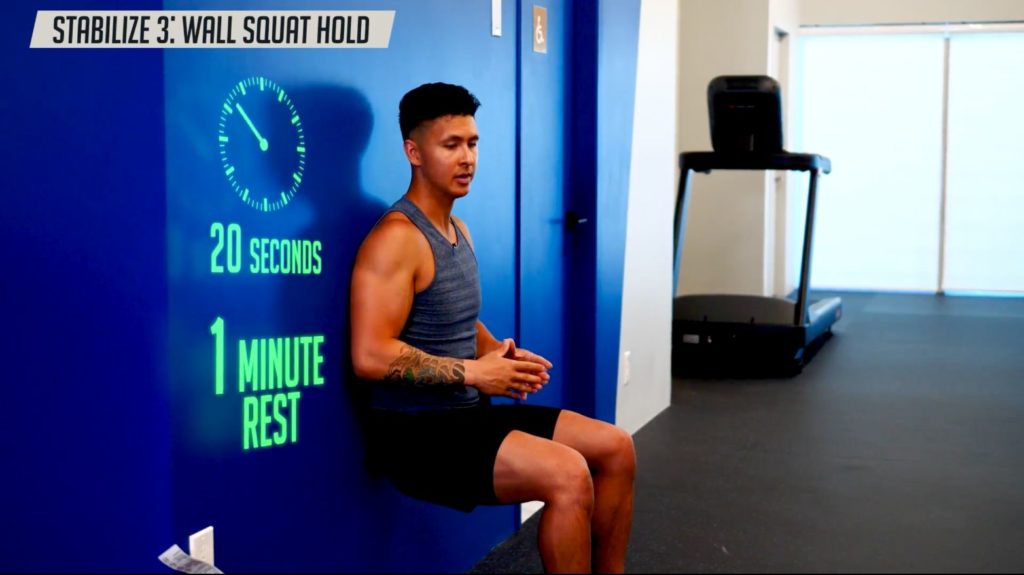
How To Program All These Knee Exercises Into Your Routine To Relieve Pain
To implement this 10-minute routine into your workouts for the best knee-strengthening results, perform it consistently 2-3 times a week. You can even use it as a warm up routine right before your lower body workouts. Although eventually the mobility stretches may not be necessary once your imbalances are fixed, the stability exercises are great moves to permanently integrate into your routine to prevent exercises - and protect your knee long term.
10-Minute Corrective Routine
Mobility:
Ankle Stretch: 2 sets of 5-10 reps each side
Hip Stretch: 2 sets of 5-10 reps each side
Stability:
Hip Airplanes: 2 sets of 10 reps each side
Eccentric Goblet Squat: 2 sets of 5 reps
Wall Squat: 2 sets of 20s holds
Have A Few Other Body Parts You Want To Unf*ck?
Alright I’ve showed you how to unf*ck your knees! But, odds are, you could probably use some help unf*cking your shoulders and unf*cking your hips too! Definitely check the articles I've done on those as well.
To check out my training programs, take our free quiz to find the best plan for your body:
Click the button below to take my analysis quiz to discover the best program for you:
↓

